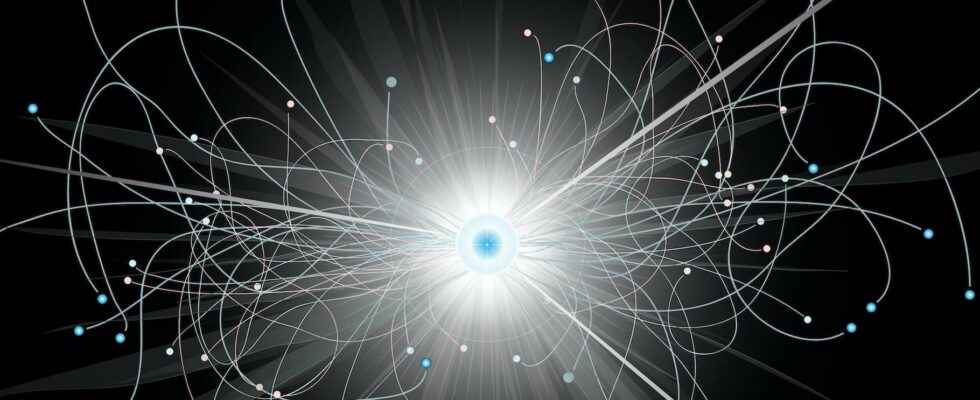You will also be interested
[EN VIDÉO] IceCube: when a station in Antarctica detects neutrinos from a cosmic drama Thanks to the IceCube experiment, researchers have been able to detect neutrinos from a tidal disruption event – the devouring of a star by a black hole. © Futura
The neutrino is a elementary particle which exists in three “flavours”say the physicists. Really ? Not so sure, some say. ‘Cause there just might be a fourth “flavour” of neutrinos. What researchers call the sterile neutrino. An almost elusive neutrino. His brothers used to cross the matter without physicists being able to realize it. But this one would be even more ghostly. Sensitive only to gravitational force. Thus, unlike its brothers, the sterile neutrino would present itself with a mass not zero. It could even constitute a non-negligible part of the famous black matter which continues to elude researchers.
A few decades ago already, a series of anomalous observations — particles which seemed to have volatilized — had motivated the implementation of several experimental projects intended to flush out the sterile neutrino. Today, some researchers from Los Alamos National Laboratory (United States) confirm this. The results of their experiments deviate from the theoretical predictions of the standard model of particle physics.
What did they actually observe? It all happened somewhere more than 1,500 meters below the caucasus mountains (Russia). Shielded from cosmic radiation. In the double tank of gallium liquid from the Baksan experiment on sterile transitions (Best), some 26 disks of chromium 51. All bombarded by a source of electron neutrinos. To transform part of the gallium into germanium 71. But between 20 and 24% less of this germanium than predicted by the models. As these figures approximate those measured in the past and as every precaution has been taken to avoid experimental errors — in the operations of the counting system, for example — the explanation must be found elsewhere. And maybe in the sterile neutrino.
Los Alamos is the lead American institution collaborating on an intriguing study with intriguing results, which point to an as-yet-unconfirmed new elementary particle: the sterile #neutrino. https://t.co/oW8SnV8j7S
—Los Alamos National Laboratory (@LosAlamosNatLab) June 17, 2022
The sterile neutrino or something else
What you need to know, to better understand, is that neutrinos can, in a way, change “flavour” along the way, according to the phenomenon of Quantum mechanics what physicists call an oscillation. Thus the measured deficit could constitute proof that oscillations occur between electron neutrinos and sterile neutrinos. “Our results are very exciting”comments Steve Elliott, analyst, in a communicated from Los Alamos National Laboratory.
“This confirms theanomaly that we have seen in previous experiments. But what that means is not obvious., continues the researcher. Because there could be other explanations for this germanium 71 production deficit. Among the most probable, an error in the estimation of the electron neutrino’s cross section. In other words, the theory could have overestimated the probability for an interaction between the electron neutrino and the gallium to take place. “If our results were to lead to the conclusion that the Standard Model and particle physics are poorly understood, that would be equally interesting”emphasizes Steve Elliott.
To get to the bottom of it and hope to finally understand where this discrepancy between observations and theory really comes from, physicists are already considering new experiments. On slightly different bases. To one energy higher, for example.
Interested in what you just read?
